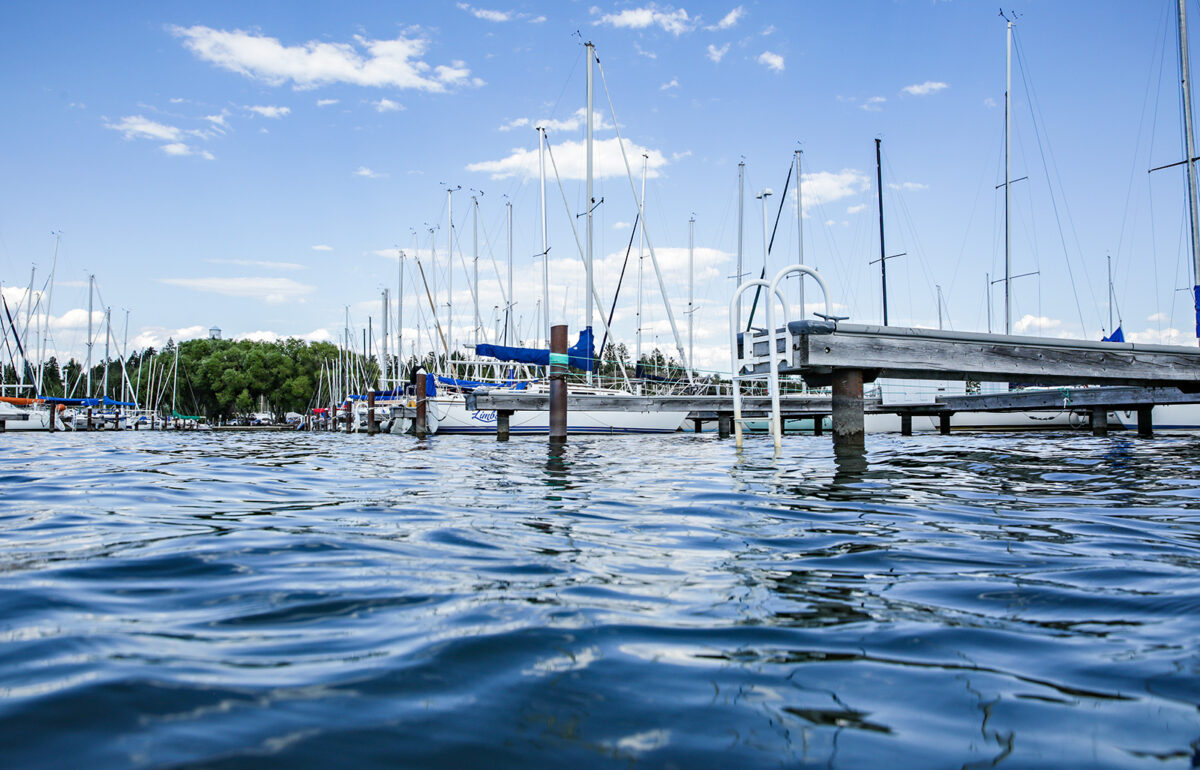Rapid Runoff Prompts Low Streamflow Forecast in Northwest Montana
High temperatures and low precipitation caused an abrupt snowmelt and an early peak this spring, bringing below average flows to the Flathead River basin and a category D2 Severe drought to the Rocky Mountain Front
By Maggie Dresser
After unseasonably hot and dry temperatures in May triggered an early peak spring runoff, low streamflows are expected in northwest Montana’s river basins through the summer, according to the USDA Natural Resources Conservation Services (NRCS) water supply outlook report.
The Flathead River basin’s snow water equivalent (SWE) levels as of June 6 was 72% of median streamflow due to low precipitation along the headwaters of the North and Middle Forks. However, the South Fork is forecast to see near normal stream flows ranging from 89% to 95% after seeing above average precipitation this winter. The Kootenai River basin sits at 71% while the St. Mary basin is at 45%.
As of June 6, the Noisy Basin SNOTEL site in the Swan Range was at 110% of average with a snow depth of 47 inches while Flattop Mountain in Glacier National Park was at 45% with a snow depth of 24 inches.
Hydrologists say most SNOTEL sites reached peak SWE levels as early as late March while other sites were also a few weeks early.
“Most SNOTELs accumulated between 70%-120% of normal peak snowpack,” said Florence Miller, a hydrologist with the NRCS. “Warmer temperatures in May caused the snowpack to melt quicker than normal, which subsequently reduced snowpack percentages drastically.”

On the Rocky Mountain Front, weather stations in the Sun-Teton-Marias basin have completely melted out following a very low snow year, leaving the region in D2 Severe Drought category with very low soil moisture levels in the 0-2 percentile. Extremely low runoff values ranging from 35% to 60% of normal is expected.
“The Sun-Teton-Marias River basins are in a difficult situation for snowpack and precipitation. The basin only received 59% of its normal monthly precipitation in May and dropped to its lowest water year total on record,” Miller said.
Hydrologists expect the Sun, Teton and Marias drainages to produce extremely low runoff values ranging from around 35% to 60% of normal.
The Bitterroot basin, too, has already melted out after a dramatic drop from May 1 when snowpack ranged from 75% to 110% of the median.
A rise in temperatures last month significantly contributed to the early runoff, with some areas in the state seeing averages 12 degrees above normal in early May, followed by an average of 17 degrees above normal by May 10.
On May 29 and May 31, SNOTEL sites in the Flathead and Kootenai basins broke daily records. The Noisy Basin weather station read 71 degrees at 6,040 feet and St. Mary reached 77 degrees at 4,560 feet on May 31.

The hot and dry conditions will also impact Flathead Lake levels this summer, forcing Séliš Ksanka Ql’ispé (SKQ) Dam operators to keep levels below the full pool of 2,893 feet.
Energy Keepers, Inc., which oversees hydroelectric operations on the lake, announced this week that Flathead Lake would reach its maximum level for the year at 2,892.3 feet. Lake levels will then begin to slowly recede, hitting 2,891.5 feet on July 12.
Hot and dry weather will continue early next week, with a high temperature of 91 degrees forecast in Kalispell and 97 degrees in Libby.